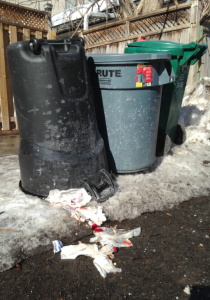
Only one-third of skilled trade applicants obtained permanent residency in the first six months of a new immigration program, according to statistics released by Citizenship and Immigration Canada.
The federal government announced the new skilled trade category for permanent residency in January 2013 as a measure to combat skilled labour shortages in Canada. The Federal Skilled Trades Program had the lowest acceptance rate across the economic immigrant categories between June 2012 and July 2013.
By comparison, 96 per cent of applicants were accepted under the Live-In Caregiver Program for people taking care of children, the elderly and people with disabilities — the highest acceptance rate.
Ronalee Carey, an immigration lawyer, said the low acceptance rate could be because the government isn’t thoroughly reviewing its applications.
The skilled trade program requires applicants to have two years of work experience, proficiency in English or French, and either a job offer with a Canadian company or certification from a Canadian skilled trade education program.
An Australian couple contacted Carey to appeal the husband’s denial for permanent residency under the program. The husband, a certified heavy equipment mechanic, had two years of work experience and submitted a certificate of qualification with his application. The government told them he was denied because he did not have a job offer.
“It’s a new program and they don’t know their own regulations,” Carey said. “They’re denying applications they shouldn’t have.”
Amanda Lannan, spokesperson for Citizenship and Immigration Canada, said in an email that applications were rejected mainly because applicants did not have the requisite two-year work experience, or either a job offer or proper certification.
The program has an annual cap of 3,000 skilled trade applications across 43 occupations. Six months after the program’s launch, the government received 27 applications but only accepted 12.
According to Tyler Charlebois, manager of marketing for the Ontario College of Trades, some of the highest number of skilled trade workers immigrating to Ontario each year are electricians, air conditioning mechanics, auto body and automotive technicians, and plumbers.
The government program was designed to place an emphasis on practical skills, rather than formal academic education, in order to reflect the reality of skilled tradespersons, Lannan said.
However, Carey expressed concern that the program requirements do not reflect the skills of the prospective permanent resident. She said it’s unreasonable that tradespeople have to take written language tests.
Another client of hers is a mechanic and a native English speaker from the United Kingdom who is worried about the written English test.
“Mechanics don’t write essays,” Carey said. “They didn’t go to university. He’s going to fail the English test.”
The U.K. client and his wife have opted to abandon permanent residency through the skilled trades program, Carey said. They want to immigrate through the Provincial Nominee Program, which allows provinces and territories to nominate workers based on their economic and labour market needs, because they think the husband’s application will be stronger.
Carey doesn’t think these challenges will affect the number of applicants, unless they become common knowledge and ultimately, common concern.
“They’re going to look at blog posts of other people who have done it,” Carey said, noting that immigrants often share knowledge about the challenges of the system.
Carey said she was in the middle of trying to figure out how to complain to the government about her Australian client’s case. She said there is currently no recourse for administrative errors.
Carey said the next step for her client would be to dispute his case in federal court. She wants the files to be reviewed again before pursuing that course of action.
“I charge $2,500 just to do the documents for court,” Carey said. “They don’t want to go to court.”











